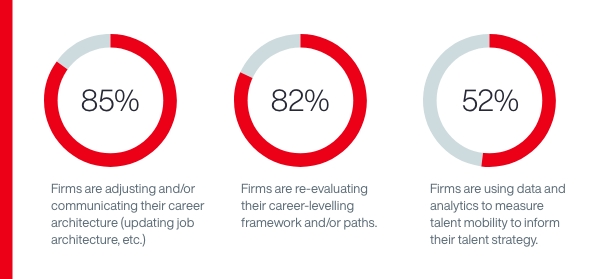Three Ways Job Architecture Supports Growth for APAC Organisations
Organisations in APAC are increasingly looking to grow and even expand beyond their domestic markets to capture international opportunities. These ambitions bring with them complex HR challenges, as operations begin to span diverse geographical, cultural, and economic landscapes. A scientifically defined and logical job architecture framework is evolving as a strategic tool to facilitate sustainable growth and scalability.
Key takeaways
- Some HR functions are relying on traditional approaches to job architecture that don’t address the need for new skills that will support ongoing growth.
- A modern, evolved job architecture provides the foundation on which to build a successful people strategy that enables more seamless growth and expansion into new markets or products and services.
- A robust job architecture is critical for adopting new operating models and addressing dynamic pay equity landscapes.
- A scientific job architecture, designed through a comprehensive job evaluation exercise, provides a consistent approach to identifying unique roles, job grades/levels, career paths, mobility criteria and pay value, reducing the impact of unconscious bias on decision making.
1. Facilitating scalable growth through job architecture
One of the foundational benefits of job architecture is the ability to define a core framework for the jobs within an organisation. It helps to cluster related types of work into job families, broad functions and career levels/grades, based on the outcome of a formal job evaluation exercise.
Job evaluation exercise measures the relative worth of roles across an organisation’s value chain and helps to establish a logical grade structure in which roles with similar evaluation scores are clustered together within a grade or career level to create a hierarchical framework.
A robust job architecture supports organisations as they grow and scale, particularly in the context of increasing scrutiny around pay practices and pay equity. A transparent grading system ensures an organisation can justify its pay scales based on objective criteria. This approach not only supports compliance but also provides a framework for benchmarking salaries as the company grows or enters new regions - rather than having to rely on anecdotal evidence or market dictates. It allows for adjustments based on local economic conditions while maintaining a baseline that upholds internal equity.
2. Enhancing talent mobility with evolved job architecture
Traditional job architectures often emphasise hierarchies and titles, which can create rigid structures that hinder flexibility and scalability. An evolved approach to job architecture integrates a focus on skills and competencies, which aligns more closely with dynamic business needs and a rapidly changing technology environment across all sectors. A workforce skills framework maps and articulates the level of expertise and capabilities required to perform the job and drive business goals. Connecting a workforce skills framework to job architecture is an incredibly powerful combination. By incorporating skills into job architecture, companies can map jobs in a way that prioritises the capabilities most essential to their strategic objectives. This skills-based architecture supports agility because it allows an organisation to quickly realign their workforce to meet changing demands. The direct benefits include:
- Understanding current and future workforce needs
- Targeting skills gaps and anticipating future skills requirements
- Innovation, agility and adaptability to the external environment
A skills-based approach provides a clear pathway for employee development, which is crucial for supporting sustainable growth. Employees are more likely to engage in learning and development when they understand how acquiring new skills can lead to concrete career advancement opportunities, particularly in a global context.
Source: Aon Global Pulse Surveys, 2022 and 2023
3. Smoothing the pathway in mergers and acquisitions (M&A)
As demand for talent rises, companies continue to use M&A transactions to acquire critical talent and shore up their own skills gaps. It is therefore important for firms to ensure they are prepared to address key people challenges that emerge before, during and after a deal is closed.
A well-developed job architecture provides clear documentation of roles, responsibilities, and compensation frameworks. This clarity is indispensable when entering new markets with unfamiliar regulatory requirements. It ensures that expatriate and local employees are evaluated on a consistent set of criteria, promoting fairness and reducing potential conflicts while facilitating a smoother integration into local markets.
Is it time to reassess your job architecture?
Job architecture is much more than an HR tool—it is a strategic asset for organisations that are looking to grow their business and/or expand into global markets.
Here are some questions to consider when aiming to build sustainable growth:
- What does a future-ready job architecture look like for my organisation?
- Is our job architecture ready to support rapid growth?
- What should be the optimal mix of our workforce? Should we buy, rent or grow talent?
- How can I enable employees to take career ownership and drive mobility?
- Do we have a defensible job architecture that will be attractive and compliant in other markets?
Aon’s latest ‘job architecture 2.0’ framework lays the foundation for a nuanced, scientific and globally consistent approach to identifying unique roles, job levels, skill clusters, career paths, mobility criteria, real and relative role worth and corresponding pay value.
Talk to us to learn more about updating your job architecture and skills framework, or to learn more about pay equity and pay transparency.



